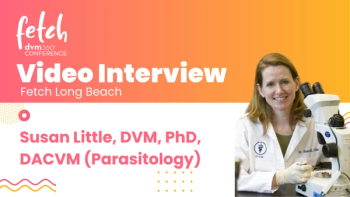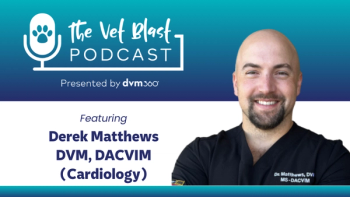
Get a handle on heartworm disease
Having a solid understanding of the heartworm life cycle, and the damage this disease can do, is the first step in getting pet owners on the right track with treatment.
Heartworm disease can be a complex topic for both practitioners and veterinary clients to understand, according to Brian Herrin, DVM, PhD, an assistant professor at Kansas State University College of Veterinary Medicine. Through his work as a parasitologist at the Kansas State Veterinary Diagnostic Laboratory, Dr. Herrin has noticed shifting dynamics in heartworm infection and management that are presenting new challenges for practitioners. He spoke about heartworm disease in detail at
Understanding the heartworm life cycle
An appropriate understanding of heartworm disease relies on knowledge of the Dirofilaria immitis life cycle:
- A mosquito ingests D. immitis microfilariae from a heartworm-infected dog. In the mosquito's tissues, microfilariae develop through the first and second larval stages (L1 and L2). This process is temperature dependent and may take as few as 10 to 14 days (longer if the environment is colder).
- Infective third larval stage (L3) microfilariae are deposited onto a new host's skin when the mosquito obtains a blood meal, and the microfilariae enter the puncture wound created by the mosquito.
- Within nine to 12 days post infection (PI), the L3 microfilariae molt into fourth-stage (L4) larvae as they migrate through host connective tissue.
- Around day 50 to 70 PI, L4 larvae enter the bloodstream and transition into developing adults.
Infection transitions from prepatent to patent at six to seven months PI, once mature adults begin to produce microfilariae. From this point forward, antigen tests are capable of
A progressive and permanent disease
Most veterinarians understand that heartworm disease is a multiorgan condition affecting the heart, lungs and vessels; however, it's important to remember that antigen-antibody complexes formed by the patient's immune response can also cause glomerulonephritis and polyarthropathies. The overall severity of disease depends on multiple factors, including worm burden, patient size, level of immune response and duration of infection.
Although “probably the most common presentation [at diagnosis] is a happy Lab wagging its tail,” Dr. Herrin explained that
“If there is a positive test,” he continued, “[the patient has] heartworm disease and needs to be treated. Do not wait for clinical signs to occur before initiating treatment.”
Unpublished experimental studies have shown that significant vessel damage can occur as early as 152 days after infection from a burden of only three worms. Such findings serve as a reminder that
Heartworm-induced vasculitis is progressive, which is why treatment should begin promptly after diagnosis. Infection can eventually cause thromboembolic disease and small vessel damage, the latter of which remains poorly understood. When worms die either naturally or with treatment, the fragments travel through the circulation before lodging in small vessels, resulting in embolic disease. Although recovery is possible after an acute embolic episode, the small vessel damage is a lifelong effect of heartworm infection that is difficult to treat and causes lasting pathology. Large worm burdens may overwhelm the body's ability to break down the thrombi and recanalize vessels. In these cases, the clots typically fibrose in an attempt to wall off the worm fragments. Mummified worms can remain for life and have been found at necropsy, even more than a decade after treatment.
Client communication and compliance are essential
Talking to owners about heartworm disease is “really challenging,” Dr. Herrin admitted. Proper communication at diagnosis is essential for ensuring that owners adhere to recommended treatment. It's imperative that owners understand that some of the pathologic changes associated with heartworm disease can't be reversed.
“Killing worms stops the progression of disease, but they don't go away,” he emphasized, which is why it's important that owners understand “some of those problems are permanent.”
Dr. Stilwell received her DVM from Auburn University, followed by a MS in fisheries and aquatic sciences and a PhD in veterinary medical sciences from the University of Florida. She provides freelance medical writing and aquatic veterinary consulting services through her business, Seastar Communications and Consulting.
Newsletter
From exam room tips to practice management insights, get trusted veterinary news delivered straight to your inbox—subscribe to dvm360.






